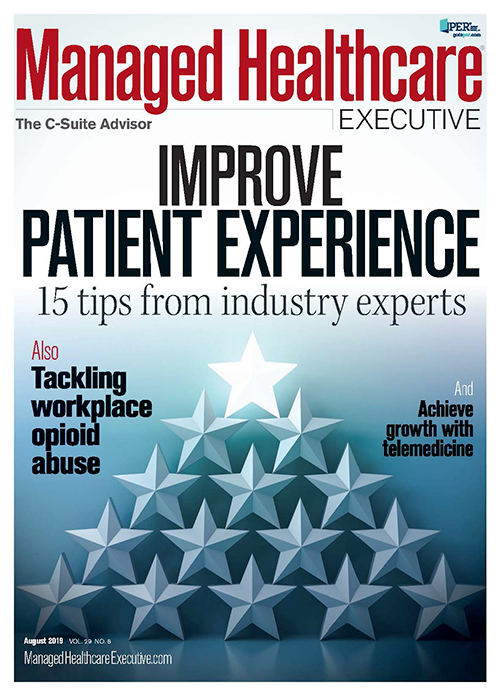Top 3 Issues for Hospital Executives
Managed Healthcare Executive asked some chief executives what their biggest challenge has been, and how they have worked to overcome it. Here’s what they had to say.

Hospital executives face a myriad of challenges in today’s ever-changing healthcare landscape. Managed Healthcare Executive asked some chief executives what their biggest challenge has been, and how they have worked to overcome it. Here’s what they had to say.
1. Serving underserved communities
Alex Hellinger, DPT, MBA, executive director, Lenox Health Greenwich Village, part of Northwell Health, New York, says his biggest challenge has been bringing healthcare back to a community that had recently lost a major hospital and lacked sufficient medical resources.
“When a hospital closes, the vast majority of health providers leave the area, ultimately creating a medical desert,” he says. “My team and I addressed the challenge by building a comprehensive medical network throughout downtown Manhattan in phases, initially opening Manhattan’s first free-standing emergency department and then gradually adding essential services including imaging, ambulatory surgery, orthopedic and rehabilitation programs, as well as primary and specialty care.”
Related article: Top 4 Challenges Healthcare Executives Face in 2019
When building a comprehensive medical center from scratch, Hellinger had to step back and take a fresh look from a patient’s perspective at how healthcare should be delivered. “We fulfilled this objective by implementing services such as telehealth, and a personalized website for physician referrals and home-based healthcare programs,” he says. “The center has positioned itself as a vital community resource by partnering with longstanding neighborhood organizations and offering free public services, such as immunizations and health screenings.”
2. Navigating different payment models
Robert C. Garrett, FACHE, CEO, Hackensack Meridian Health, Edison, New Jersey, has found navigating two different payment models to be a big challenge. “We’re moving from a volume-based environment to a value-based environment,” he says. “Our 17 hospitals need to remain solvent, so we are still reimbursed on a fee-for-service basis to a large extent. If I had to pick a definitive path-to either stay in fee-for-service or go into the value-based world-I would vote for going into the value-based world. That’s because all the incentives are aligned and physicians and hospitals are rewarded for achieving the best outcomes for the people we serve.”
Garrett has found this to be the best strategy when looking to lower the overall cost of care delivery. “To keep the needle moving toward value, we are growing our accountable care organizations (ACOs),” he says, adding that the health system’s best performing ACO saved about $145 million over five years and is among the nation’s top performers. “Beyond ACOs, we are investing in more patient-centered models including bundled payments, shared risk arrangements, and value-based purchasing.”
3. Staying strong despite being small
Michael Maron, president and chief executive officer, Holy Name Medical Center, Teaneck, New Jersey, which has 351 inpatient beds, has found it challenging to provide patients with high-quality, affordable care in a transparent, cost-effective manner in light of its small size.
“With individuals demanding to play a much more active role in choosing where and how they spend their healthcare dollars, we need to ensure that patients receive high-quality, patient-focused care,” Maron says. To provide this, Holy Name is moving away from a procedure-driven model toward a relationship-building model that is more patient-centric, focusing on every individual’s unique needs. These include linguistic, dietary, cultural, religious, familial, financial needs, as well as personal and social considerations.
Holy Name’s outreach programs and culturally-sensitive initiatives such as Asian Health Services, Familia Y Salud, and its faith-based services have become national models for addressing the diverse needs of various populations.
As the healthcare market continues to change, Holy Name will continue to work with policymakers, insurers, and other stakeholders to accomplish its goals.
Karen Appold is a medical writer in Lehigh Valley, Pennsylvania.

Doing More and Saving More with Primary in Home Care
September 1st 2021In this week’s episode of Tuning In to the C-Suite podcast, MHE Associate Editor Briana Contreras interviewed VillageMD’s Senior Medical Director of Village Medical at Home, Dr. Tom Cornwell. Dr. Cornwell discussed the main benefits of primary care at home, which includes the benefit of cost savings for patients, maintaining control of hospital readmissions and others. Dr. Cornwell also noted what has changed in the industry of at-home care and if there has been interest from payers like insurance companies and medicare in the service.
Listen